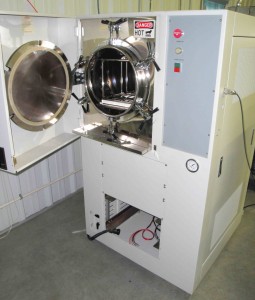
The HAST acronym stands for Highly Accelerated Temperature/Humidity Stress Test and is sometimes shortened to Highly Accelerated Stress Testing. HAST makes use of accelerated temperature and humidity conditions to precipitate failures which could be caused by long term exposure to humid environments.
HAST has been developed to replace Temperature-Humidity-Bias (THB) testing which has typical conditions of 85 ⁰C and 85 % RH along with a bias voltage applied to the sample. A typical THB test time would be 1000 hours. HAST uses increased test temperatures of 110 to 130 ⁰C which decreases the test time to as low as 96 hours compared to a THB test. Thus, by choosing HAST over THB for an accelerated reliability test, testing can be completed in days, not weeks.
Continue reading A Primer for HAST: Highly Accelerated Stress Testing →

